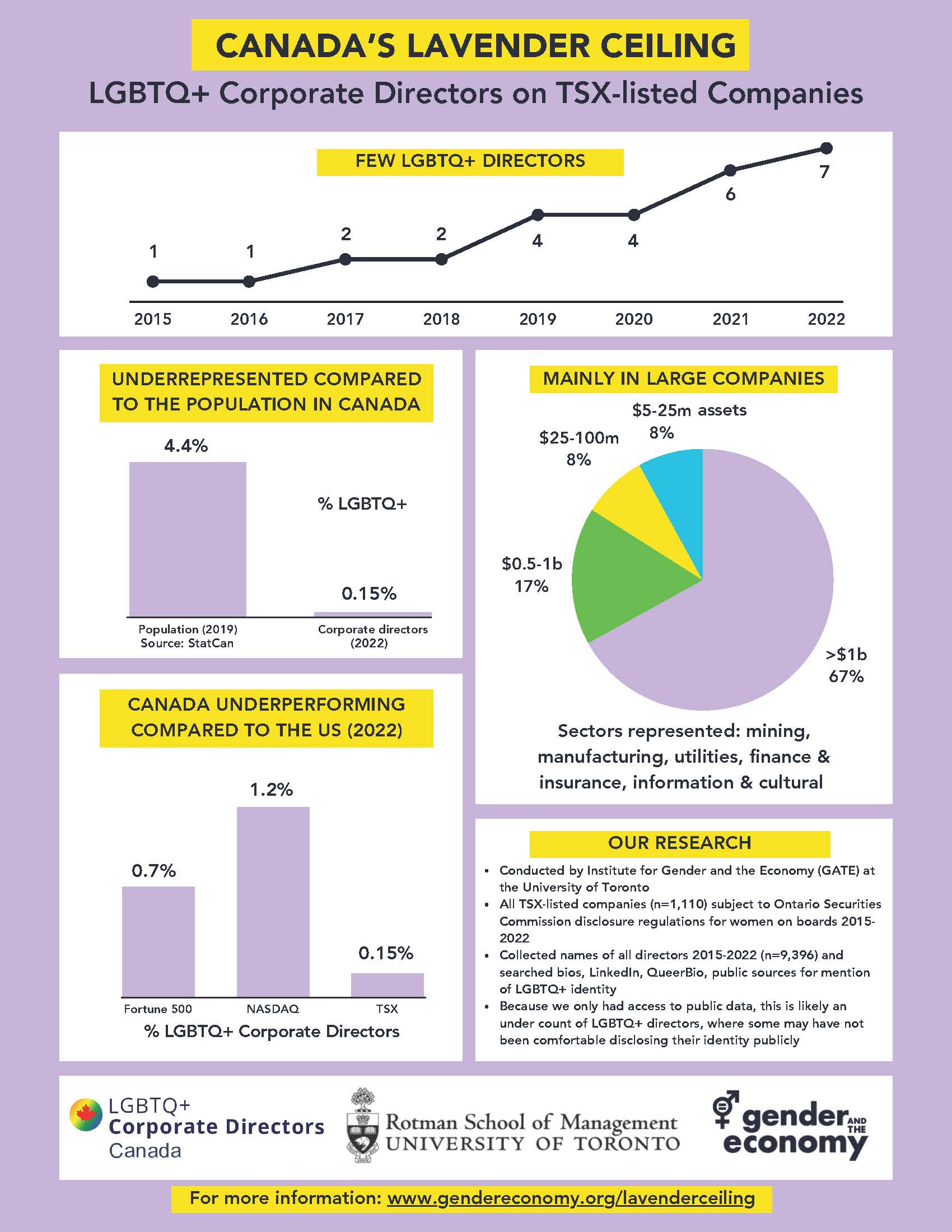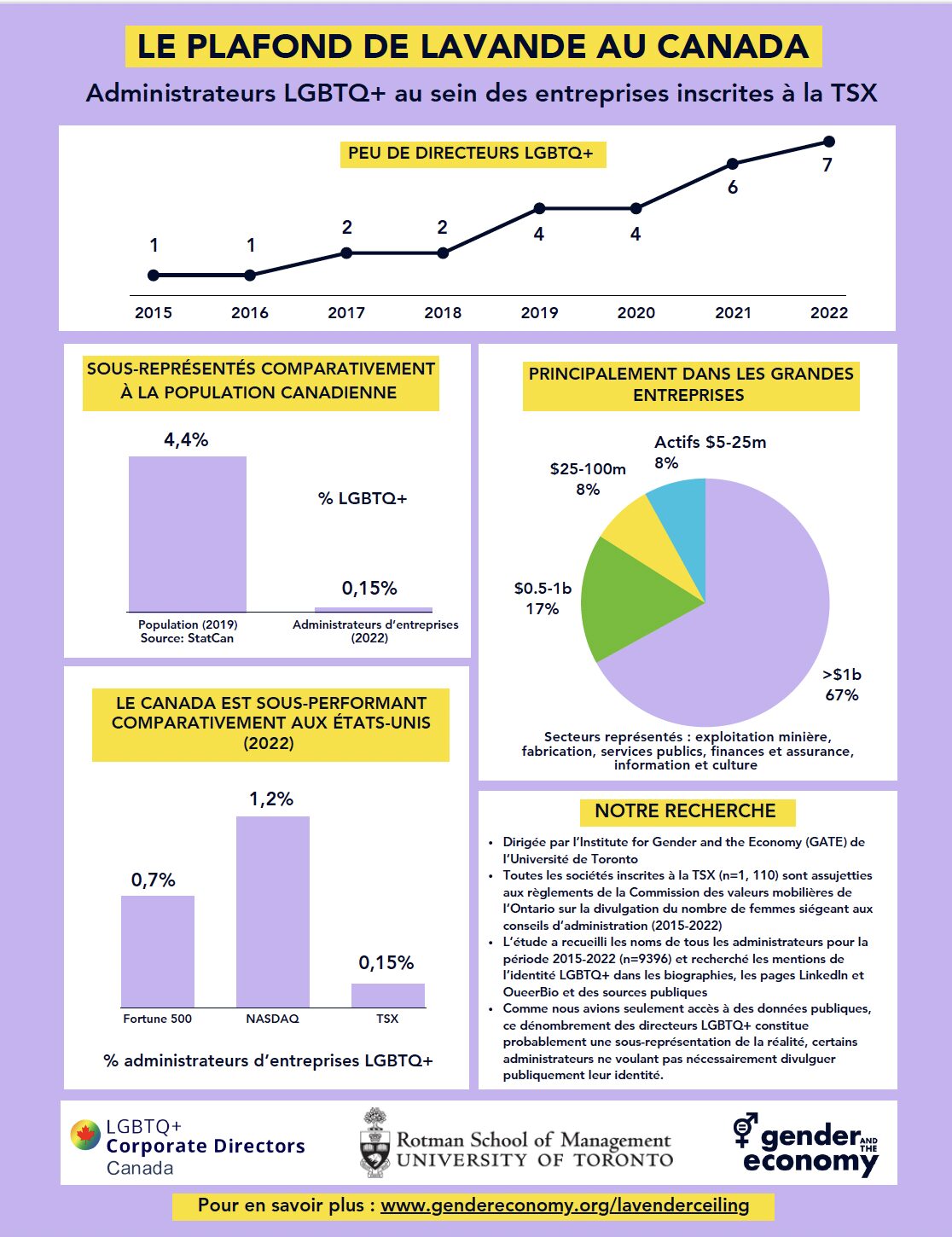Executive summary
LGBTQ+ people are underrepresented on corporate boards of directors and throughout most organizations in Canada. This report summarizes findings from an analysis of representation on Toronto Stock Exchange-listed companies from 2015-2022 along with a review of the existing research on LGBTQ+ representation on boards and within organizations. Key insights include:
- Only 0.15% of TSX-listed company directors publicly identify as members of the LGBTQ+ community, yet greater board diversity is associated with greater connections and collaborations among board members, increased innovation and long-term strategic thinking, greater inclusiveness throughout the organization, and improved corporate resilience to crisis.
- Research and practice have overlooked LGBTQ+ board directors, but a review of research on LGBTQ+ inclusion in organizations more broadly give us clues into the sources of the “lavender ceiling” of barriers that prevent LGBTQ+ people from entering and rising up into top leadership.
- There is a plethora of evidence that LGBTQ+ people experience discrimination in applying for and interviewing for jobs, in their daily work experiences once they get jobs, and in their exclusion from networks that could lead to promotion opportunities. This leads to feelings of isolation, lack of engagement and higher turnover.
- LGBTQ+ employees experience a disclosure dilemma at work: they can achieve greater authenticity and connection by “coming out” but risk discrimination, or they can hide their identities to avoid discrimination but risk the disconnection that comes from not bringing their whole selves to work. Moreover, this choice is not a one-time thing but instead must occur with every new situation and when meeting each new person.
- LGBTQ+ employees have multiple intersecting identities—related to gender, race, disability, immigrant status, Indigeneity or other—which can result in different experiences at work, where different identities can either offset or amplify advantages or disadvantages.
- LGBTQ+ employees can be agents for change by both normalizing LGBTQ+ identities and disrupting existing norms in organizations. But the burden of change should not rest only or mainly on the shoulders of these employees.
- Peers, supervisors, organizational leaders, policy makers and other stakeholders can create more inclusive organizations by becoming strong allies, implementing effective training, setting strong cultures and developing inclusive policies and practices. These actions may not be fully effective on their own, but in combination can create a positive cycle of inclusion that is better for LGBTQ+ employees and for organizational health and resilience overall.


DOWNLOAD THE FULL REPORT (IN ENGLISH/EN FRANÇAIS).


DOWNLOAD THE INFOGRAPHIC (IN ENGLISH/EN FRANÇAIS).
The report was written by Matt Wang and Sarah Kaplan. The infographic was prepared by Sarah Kaplan with research assistance from Daphné Baldassari, Makayla Fang, Fiona Hoang, Ian Wan, and Matt Wang. This work was supported by LGBTQ+ Corporate Directors Canada and the 2SLGBTQI+ Entrepreneurship Knowledge Hub.
In an op-ed for The Globe and Mail, Jane Griffith and Sarah Kaplan discuss barriers that keep LGBTQ+ people out of leadership roles and board directorships, and what corporates can do to help.







